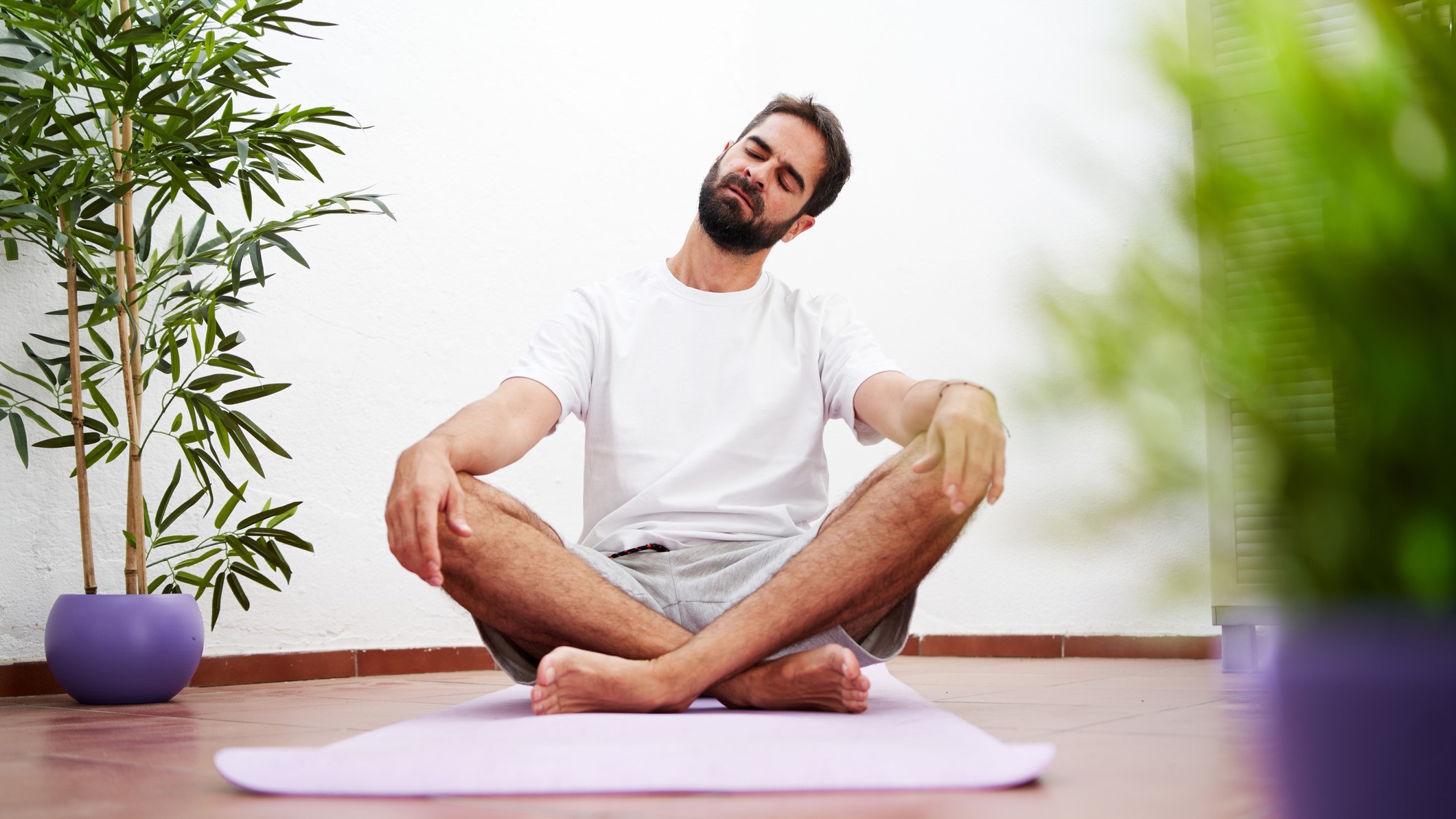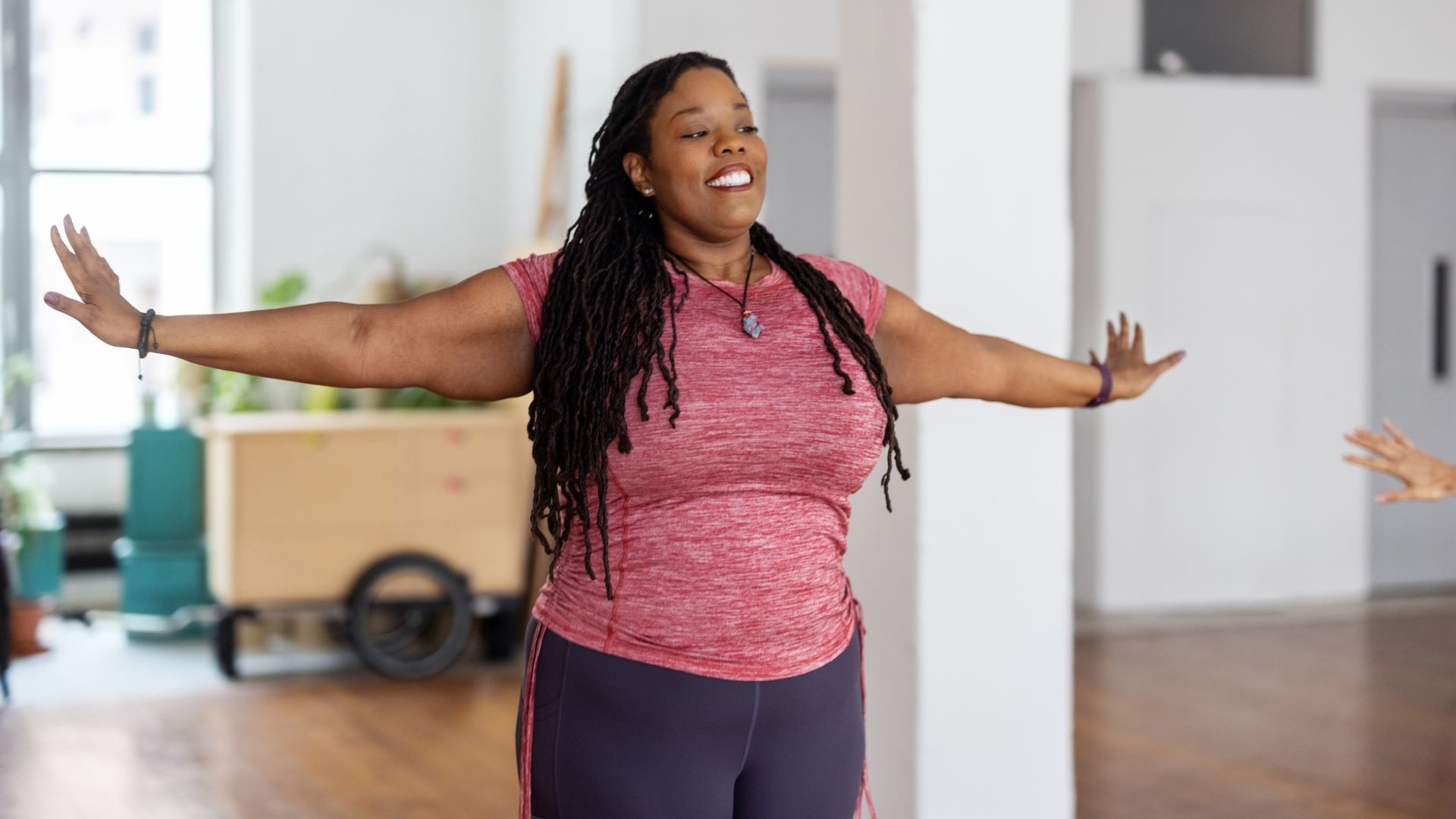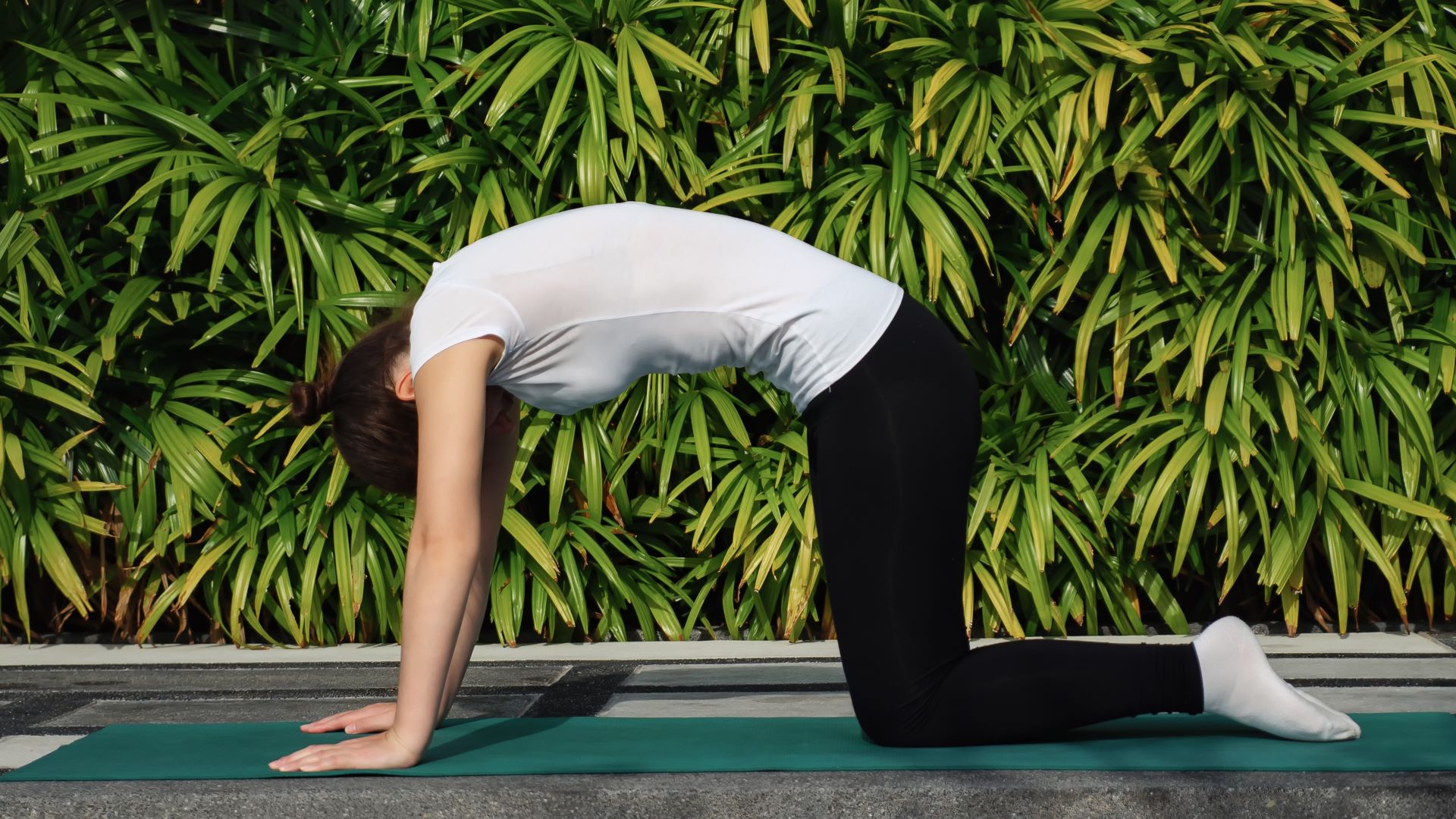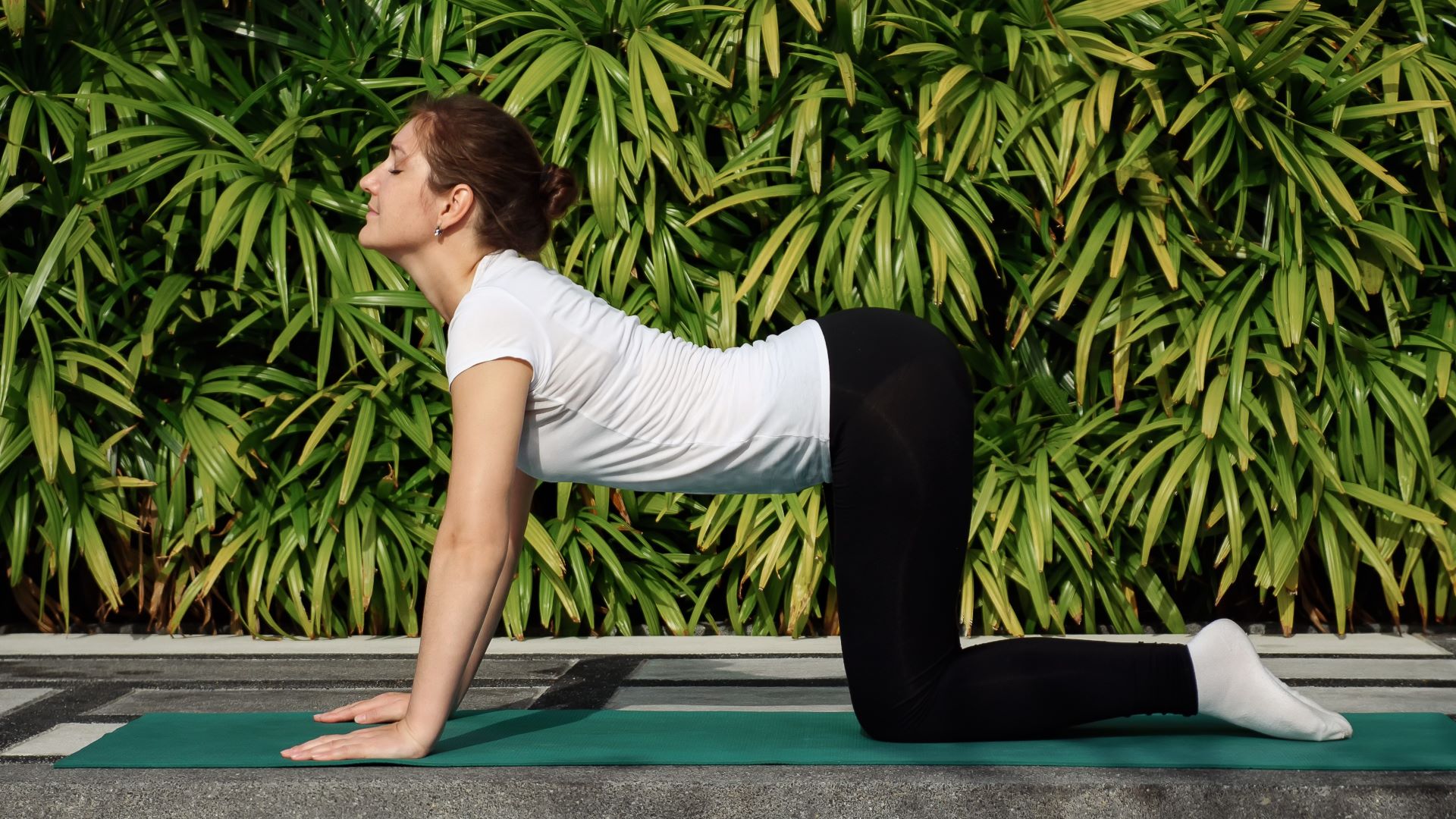
Soreness in the neck and shoulders is a common problem, and you may find yourself noticing it most when you wake up. Often this is due to sleeping in an odd position, improper mattress support or disrupted sleep. If it happens frequently, troubleshoot your sleep setup to see if there is an obvious cause and consider incorporating a stretching routine into your morning.
"Movement helps to keep our joints lubricated and our muscles flexible," says physical therapist Susan Winograd, owner of Pelvicore Rehab & Wellness. "If you find yourself waking up achy, get moving—movement is the best medicine!"
If you're not sure where to start, try these three recommended stretches from Winograd to loosen a stiff neck and shoulders in the morning.
The stretches
1. Neck rotation

- Stand or sit with your back straight.
- Slowly rotate your head in a circular motion. Don't try to force a stretch, keep the movement natural.
- Perform 5-10 slow rotations in each direction.
Why? This movement gently mobilizes the neck and improves flexibility.
2. Arm circles

- Stand with your feet shoulder-width apart and your arms extended to the sides.
- Make small circles with your arms, gradually increasing the size of the circles.
- Progress to using full range of motion, as if you are swimming backstroke in a pool, but keep the movements relaxed.
- Once you are working at your full range of motion, perform 10 circles forward, then 10 backward.
Why? Arm circles warm up the shoulders and improve circulation.
3. Cat-cow


- Start on all fours with your hands under your shoulders and knees under your hips.
- Inhale and arch your back, lifting your head and tailbone—this is cow position.
- Exhale and round your back, tucking your chin and tailbone—this is cat position.
- Flow between these positions for 1-2 minutes, focusing on smooth, controlled movements.
Why? This gentle flow loosens up the spine, shoulders and neck.
How to improve your sleep setup
Winograd suggested three areas to look at if you are consistently waking up with neck pain.
1. Your sleep position
Winograd says sleeping on your back helps maintain natural spinal alignment, but if you're a black sleeper who's still experiencing problems, sleep with a pillow under your knees for optimal comfort and alignment.
Winograd advises side sleepers to place a pillow between their knees to prevent strain on their lower back.
Avoid sleeping on your stomach altogether, as it can put pressure on your spine.
2. The room temperature
The temperature in your bedroom can affect how well you sleep and how your body feels the next day. A cooler room (around 65°F/18°C) is generally recommended for better rest.
3. Your mattress
A mattress that's too soft or too firm can cause discomfort and back pain. Look for one that supports the curves of your body while keeping your spine aligned. Our colleagues at Tom's Guide have a helpful buying guide to the best mattresses for back pain.







